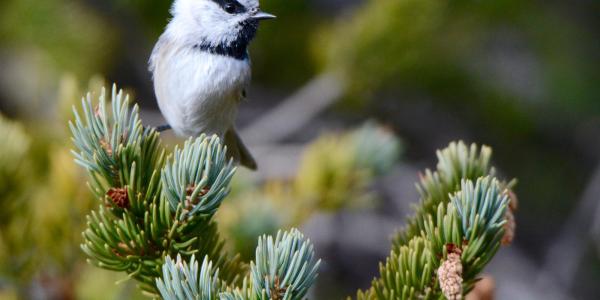
The microbiome seems ubiquitous: Humans and many other species rely on billions of tiny organisms in their guts to aid in digestion, metabolism and other functions. Now, scientists at CU Boulder are questioning the idea that the microbiome is universal among animals.
Caterpillars have far less bacteria and fungi inhabiting their gut than other animals and the microbes that are inside them seem to lack any identifiable role, aside from occasionally causing disease. The surprising findings show that this diverse group of insects might not need microbes, and could lead to new discoveries about the extent and role of resident microbial communities in animals.
The findings were published today in the journal Proceedings of the National Academy of Sciences.
“In the microbiome field, there’s this prevailing assumption that all animals have a resident microbiome,” said Tobin Hammer, a doctoral candidate in CU Boulder’s Department of Ecology and Evolutionary Biology. “When I started the project, I was not expecting it to turn out this way.”
Hammer was curious about the role of microbes in caterpillars. The order Lepidoptera, with some 180,000 species of butterflies and moths, is well studied, but scientists weren’t sure if caterpillars have any microbial partners. Such symbionts are common in herbivores, which often need help digesting tough, fibrous plants. Hammer thought that herbivorous caterpillars, too, might be hosts to a community of bacteria and fungi.
Hammer and his collaborators collected fecal samples from caterpillars in Colorado, Arizona, New Hampshire, Massachusetts and Costa Rica. They extracted DNA from these droppings, and from a leaf from the plant that the caterpillar was munching on. The scientists also used other animals’ feces for comparison, including samples found at field sites and in the lab.
Compared to the other animals, caterpillars had about 50,000 times fewer microbes. If human guts are like a rainforest in terms of microbial abundance, Hammer said, caterpillar guts are like a desert.
Most of the microbial DNA the scientists did find inside the caterpillars matched the microbes found on the plant leaf, suggesting that the microbes were mostly ingested from their surroundings. In contrast, other animals harbor microbial communities that are far more distinct from their environment.
To see if the sparse microbes in caterpillar guts served a role, the scientists conducted a second experiment. They raised caterpillars in plastic bags, and sprayed their food with antibiotics to kill anything living in their guts. The antibiotic-fed caterpillars grew and developed into adults without any hindrance, seemingly unimpeded by the lack of microbes. In other insects, similar experiments have caused stunted growth and death.
“Caterpillars operate fundamentally differently than a lot of other animals,” said Hammer.
The research suggests that there may be trade-offs for hosting a microbiome. Microbes can leach nutrients from their host, and can move from being allies to disease-causers. They can also make their host vulnerable. For example, if caterpillars did rely on microbes, it might be possible to target gut symbionts in crop-decimating caterpillars with special pesticides. The caterpillar, with its simple lifestyle of continuous eating, might simply not benefit from any microbes.
While there is some evidence that butterflies have more microbes than caterpillars, the benefit to the butterfly is still unclear. Hammer plans to examine this relationship in the future and hopes the findings will lead to more discoveries of unique or absent microbiomes. He speculates that other researchers have found similar results in the past, but did not report them, thinking they were inaccurate.
More broadly, the research pushes scientists to consider the costs and benefits of a microbiome and why an organism might adopt a microbial community.
“I think it will encourage us to reconsider how diverse these animal-microbial associations really are,” said Hammer.



